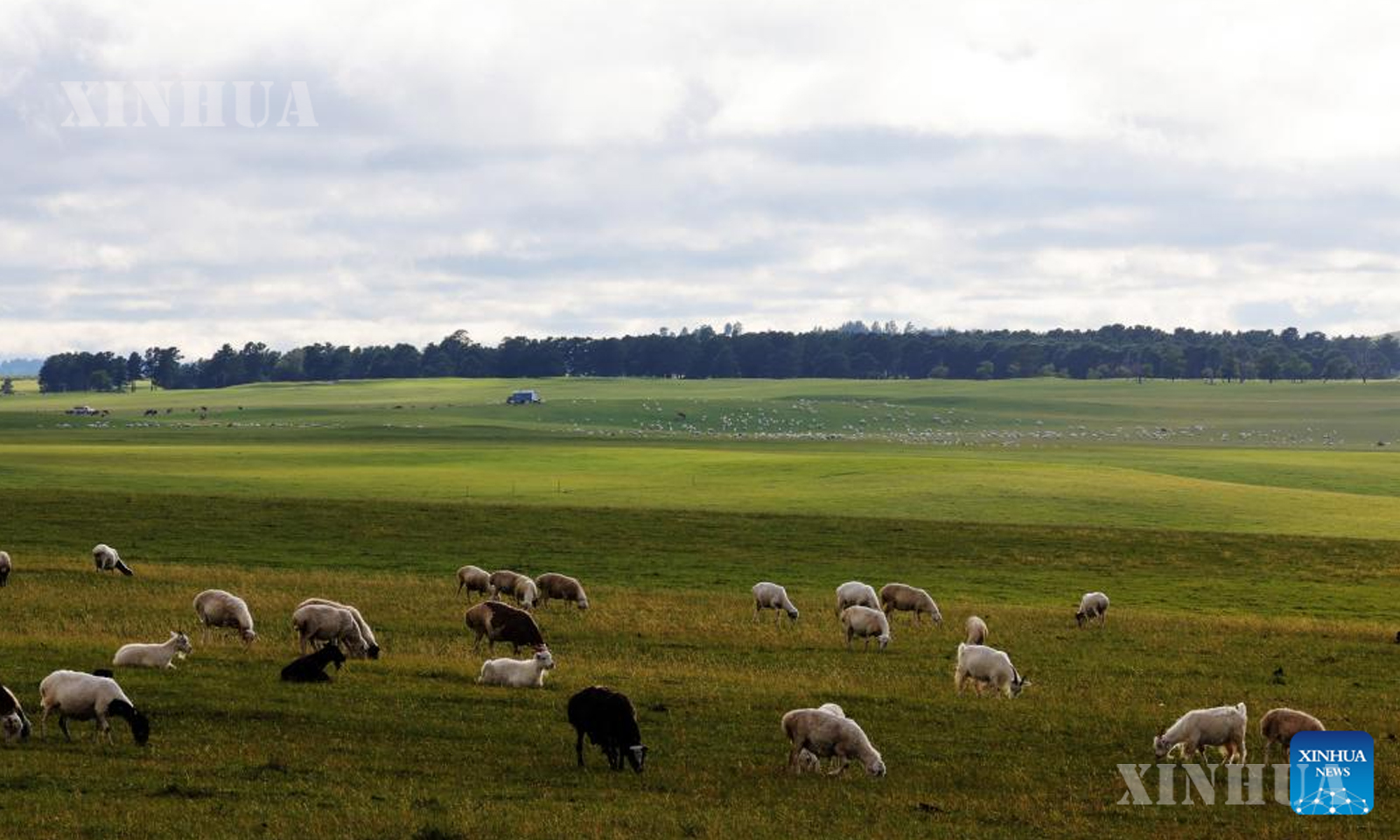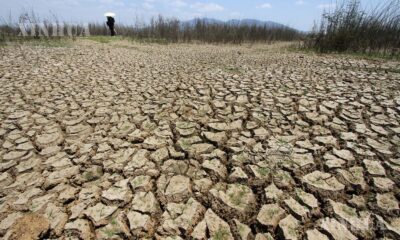China
မိုးခေါင်မှုကြောင့် မြက်ခင်းပြင်များ ပျက်စီးနိုင်ဟု ကမ္ဘာ့သုတေသနလေ့လာမှုကဖော်ပြ

ပေကျင်း၊ အောက်တိုဘာ ၂၁ ရက် (ဆင်ဟွာ)
တရုတ်သုတေသနအဖွဲ့တစ်ဖွဲ့က ဦးဆောင်သော နိုင်ငံပေါင်း ၂၈ နိုင်ငံပါဝင်သည့် လေ့လာတွေ့ရှိချက်အရ ပိုမိုပြင်းထန်ကာ ကြာရှည်ဖြစ်လာသည့် မိုးခေါင်မှုကြောင့် ကမ္ဘာတစ်ဝန်းရှိ မြက်ခင်းပြင်များသည် လိုက်လျောညီထွေမရှိတော့ပဲ ပျက်စီးမှုနှင့် ကြုံရနိုင်ကြောင်း ကမ္ဘာ့ပထမဆုံးသက်သေအထောက်အထား ထွက်ပေါ်ခဲ့သည်။
ယခုသီတင်းပတ်တွင် ထုတ်ဝေသည့် သိပ္ပံဂျာနယ်တွင်ဖော်ပြခဲ့သည့် အဆိုပါ လေ့လာမှုကို ပေကျင်းသစ်တောတက္ကသိုလ်နှင့် အမေရိကန်နိုင်ငံ ကော်လိုရာဒိုတက္ကသိုလ်အပါအဝင် အဖွဲ့အစည်းပေါင်း ၁၂၀ ကျော်မှ သိပ္ပံပညာရှင်များ ပါဝင်လုပ်ဆောင်ခဲ့ကြခြင်းဖြစ်သည်။ ၎င်းတို့သည် မိုးခေါင်မှုကာလအတွင်း ကမ္ဘာ့တိုက်ကြီးခြောက်ခုမှ မြက်ခင်းပြင်နှင့် ချုံနွယ်ဒေသ ၇၄ ခုတွင်အပင်များကြီးထွားမှုကို ခြေရာခံ သုတေသနပြုခဲ့ကြသည်။
မိုးခေါင်မှု၏ ပြင်းထန်မှုနှင့်ကြာချိန်ကာလ ပေါင်းစပ်သက်ရောက်မှုသည် ကမ္ဘာတစ်ဝန်း ချုံနွယ်ဒေသများနှင့် မြက်ခင်းပြင်ဖြစ်ပေါ်မှုကို ပိုမိုဆိုးဝါးစေကြောင်း လေ့လာမှုက ကမ္ဘာ့လုံးဆိုင်ရာအထောက်အထား ပေးစွမ်းခဲ့ခြင်းဖြစ်သည်။
သုတေသနပညာရှင်များသည် လေးနှစ်ဆက်တိုက် ဆိုးဆိုးရွားရွားမိုးခေါင်မှုပြီးနောက် မြက်ခင်းပြင် ဖြစ်ပေါ်နိုင်စွမ်း ဆုံးရှုံးမှုသည် ပထမနှစ်နှင့်နှိုင်းယှဥ်ပါက ခန့်မှန်းခြေအားဖြင့် ၂.၅ ဆ လျော့ကျခဲ့ကြောင်း ရှာဖွေတွေ့ရှိခဲ့သည်။ အဆိုပါတွေ့ရှိမှုက ရာသီဥတုပြောင်းလဲမှုကြောင့် အနာဂတ်မိုးခေါင်မှုများကို ကြာရှည်ပြီး ပိုမိုဆိုးဝါးစေလျှင် ဂေဟစနစ်သည် အထွက်နှုန်းနည်းပါးသောအခြေအနေ မကြာခဏဖြစ်ရာမှ အကျဘက်သို့ မြန်ဆန်စွာရောက်ရှိ ကူးပြောင်းသွားနိုင်ကြောင်း အဆိုပြုခဲ့သည်။
ဂျာနယ်အယ်ဒီတာ Bianca Lopez ၏အဆိုအရ အဆိုပါလေ့လာမှုသည် အနာဂတ်ရာသီဥတု ပြင်းထန်ဆိုးရွားမှုများသည် ဂေဟစနစ်အပေါ် စိုးရိမ်ဖွယ်ရာနည်းလမ်းများဖြင့် သက်ရောက်မှုတိုးလာမည်ဆိုသည့် သက်သေအထောက်အထားများပြားလာမှုကို အားဖြည့်ပေးလျက်ရှိကြောင်း သိရသည်။ (Xinhua)
…………………….
(English Version)
Global study shows intensifying drought may wreck grasslands
BEIJING, Oct. 19 (Xinhua) — A 28-country collaborative study, spearheaded by a Chinese research team, has provided the first global evidence that as droughts become longer and more severe, grasslands worldwide do not simply adapt — they tend to undergo breakdown.
Published this week in the journal Science, the study involved scientists from Beijing Forestry University and their counterparts from over 120 institutions, including Colorado State University in the United States. They tracked plant growth in 74 grasslands and shrublands across six continents during droughts.
The study provides the first global evidence that the combined effect of drought intensity and duration exacerbates productivity losses in grasslands and shrublands worldwide.
The researchers found that after four consecutive years of extreme drought, productivity losses increased by approximately 2.5 times compared with the first year. This suggests ecosystems could transition from a persistently low-yield state to a rapid downward spiral if climate change continues to prolong and exacerbate future droughts.
This study contributes to mounting evidence that future climate extremes will increasingly impact ecosystems in novel and concerning ways, according to Bianca Lopez, the journal’s editor.
Photo : This photo taken on Aug. 2, 2025 shows a flock of sheep on the grassland in Hulun Buir, north China’s Inner Mongolia Autonomous Region. (Xinhua/Jia Lijun)






